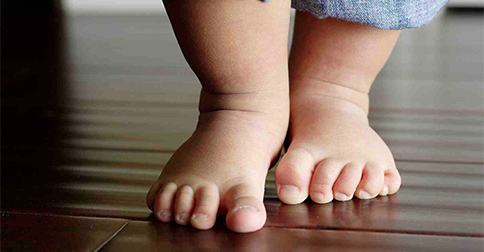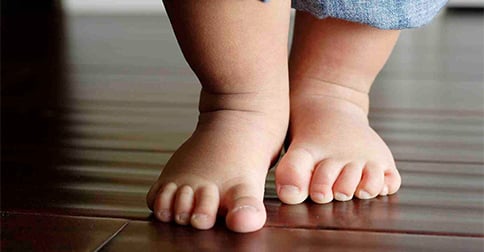Every day, children are born with various orthopedic conditions that can seriously affect their lives if left untreated. Is your baby showing symptoms? When do you need to look into treatments? Learn more about the four most common conditions from BioTech Limb and Brace in Birmingham, Alabama.
#1: Toe Walking
As toddlers begin to walk, many develop a “toe walk.” This is not always a cause for concern, but you should certainly pay attention because sometimes toe walking is related to conditions like autism and cerebral palsy.
If the toe walking in your toddler becomes persistent, you should consider visiting an orthopedic specialist. Often, physical therapy and exercise can help reduce toe walking, with many toddlers outgrowing toe walking completely. If not, there may be an underlying neurological problem that needs to be treated separately.
The best way to determine the cause and treatment for toe walking in your little one is to visit BioTech Limb and Brace in Birmingham, Alabama.
#2: Intoeing
Intoeing is not to be confused with toe walking. Intoeing is sometimes seen in babies and children and is often referred to as being pigeon-toed. Children who walk with their toes turned in toward each other often outgrow intoeing by the time they are adolescents. For this reason, treatment is not usually considered.
For children with severe intoeing or associated pain, there are corrective shoes and custom orthotic knee braces that can be worn to help speed up the process. If your child is having trouble walking, a pediatric orthopedic specialist at BioTech can help you determine the best type of treatment for your little one.
#3: Flat Feet
Every person has a different amount of arch to their feet, however no arch is a problem. Believe it or not, quite a few babies are born with flat feet. Although this, too, is typically outgrown after about six months, if you notice your child experiences pain when walking then it is important to see a medical professional about orthopedic shoe supports.
#4: Bowlegged
Some children, while in the womb, are folded before birth. These children are often bowlegged as a result. This means that their legs bow outward around the knee. Typically, their legs will straighten out on their own by about three or four years old. It is actually a normal part of development in most children. However, some children can have more severe alignment problems that need treated.
Growth abnormalities, trauma, or disease can cause a child to remain bowlegged for years beyond infancy. It is important to have a specialist take an x-ray to determine the best solution for your child. Any type of torsion of the bones, like tibial torsion (twist of the shin or knee), can cause the condition to worsen. If it is not treated, or if it is getting worse, bowleggedness can lead to osteoarthritis.
Corrective shoes, prosthetic or orthotic knee braces, and castings can typically help; however surgery may also be a potential solution.
Consult the Experts at BioTech Limb and Brace
If you’re ready to talk to a specialist and receive the personal care you little one needs and deserves, contact BioTech Limb and Brace today.
Our pediatric specialists will help you diagnose, care for, and treat your child, helping to provide a healthier and more comfortable life. We believe in building meaningful relationships with each of our patients, and we would love to have the opportunity to help you today.

